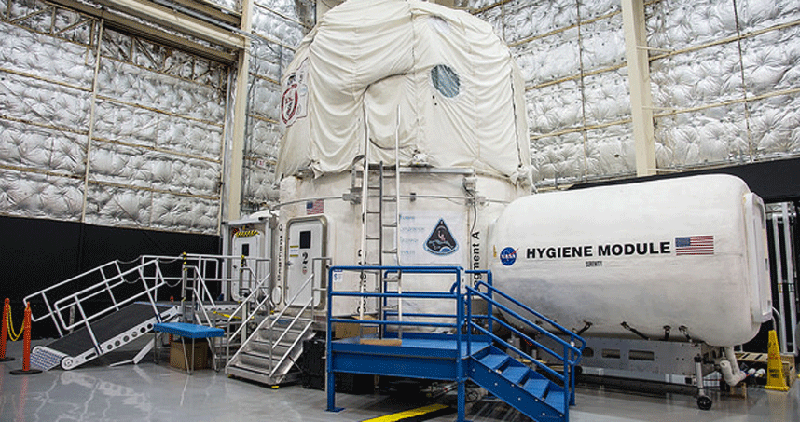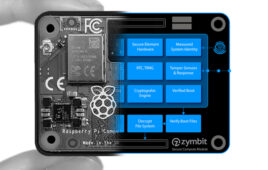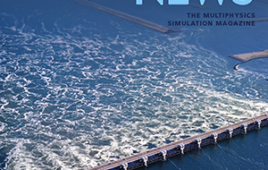Northwestern University researchers are developing a predictive model to help NASA anticipate conflicts and communication breakdowns among crew members and head off problems that could make or break the Mission to Mars.
NASA has formalized plans to send a crewed spacecraft to Mars, a journey that could involve 250 million miles of travel. Among the worldwide teams of researchers toiling over the journey’s inherent physiological, engineering, and social obstacles, Northwestern professors Noshir Contractor and Leslie DeChurch, and their collaborators, are charting a new course with a series of projects focused on insights from the science of teams and networks.
In a multiphase study conducted in two analog environments — HERA in the Johnson Space Center in Houston and the SIRIUS mission in the NEK analog located in the Institute for Bio-Medical Problems (IBMP) in Russia — scientists are studying the behavior of analog astronaut crews on mock missions, complete with isolation, sleep deprivation, specially designed tasks, and mission control, which mimics real space travel with delayed communication.
The goal is threefold: to establish the effects of isolation and confinement on team functioning, to identify methods to improve team performance, and to develop a predictive model that NASA could use to assemble the ideal team and identify potential issues with already composed teams before and during the mission.
Contractor and DeChurch discussed their latest findings and next steps at a February 17 press briefing at the American Association for the Advancement of Science (AAAS) annual meeting in Washington, D.C.
“It’s like astronaut Scott Kelly says, ‘Teamwork makes the dream work,’” said Contractor, the Jane S. and William J. White Professor of Behavioral Sciences in the McCormick School of Engineering, School of Communication, and the Kellogg School of Management.
Even for an astronaut, the psychological demands of this Mars journey will be exceptional. The spacecraft will be small, roughly the size of a studio apartment, and the round-trip journey will take almost three years.
“Astronauts are super humans. They are people who are incredibly physically fit and extremely smart,” said DeChurch, a professor in the School of Communication at Northwestern. “We’re taking an already state-of-the-art crew selection system and making it even better by finding the values, traits and other characteristics that will allow NASA to compose crews that will get along.”

The unique three-story habitat serves as an analog for isolation, confinement, and remote conditions. Credit: NASA
Communication delays with worldwide mission controls will exceed the 20-minute mark. In that sense, the Mars mission will be like no mission that has come before.
“A lot of the past efforts to try to create models to simulate the future have run into criticism because people have said it’s not really grounded in good data,” Contractor said. “What we have here is unprecedented good data. We aren’t talking about intuition and expert views, this model is based on real data.”
The Northwestern researchers have been culling data from the Human Experimentation Research Analog (HERA) at Houston’s Johnson Space Center. HERA’s capsule simulator houses astronauts for up to 45 days; a mock mission control outside the capsule augments the realism with sound effects, vibrations and communication delays.
Those on the inside undergo sleep deprivation and try to perform tasks. The researchers collect moment-to-moment metrics about individual performance, moods, psychosocial adaptation and more.
The teams DeChurch and Contractor have studied experienced diminished abilities to think creatively and to solve problems, according to results from the first eight analog space crews. The teams are able to successfully complete tasks between 20 and 60 percent of the time.
“Creative thinking and problem solving are the very things that are really going to matter on a Mars mission,” DeChurch said. “We need the crew to be getting the right answer 100 percent of the time.”
The next phase of the research, just begun on February 15, involves using the model to predict breakdowns and problems a new HERA crew will experience and making changes to “who works with whom, on what, when,” Contractor said. “We are going to run our model to see how we can nudge the team into a more positive path and make them more successful.”
The researchers are also expanding the experiment to the SIRIUS analog in Moscow, where, beginning on March 15, four Russians and two Americans, will undertake a 120-day fictional mission around the moon, and including a moon landing operation.
Contractor and DeChurch are in the midst of four NASA-funded projects exploring team dynamics and compatibility in preparation for the Mars journey.
Their NASA studies address different aspects of the crew’s challenges:
- The likelihood that the crew and its support teams on Earth will have good chemistry and coping mechanisms, and how to predict possible crew-compatibility outcomes
- Work design; structuring the workflow so that astronauts can better manage transitions from solo to team tasks
- Identifying and building shared mental models, whereby a team of varied specialists can find enough common ground to effectively accomplish their tasks but not so much that they engage in “group think” or form alliances.
Contractor, a leading expert in network analysis and computational social science, leads Northwestern’s Science of Networks in Communities (SONIC) research group. DeChurch, a leading expert in teamwork and leadership, leads Northwestern’s Advancing Teams, Leaders, and Systems (ATLAS) lab. Her research focuses on team performance; psychology, social interactions, and how multiteam systems best function.
“Our complementary strengths have been a winning combination for tackling the big interdisciplinary questions,” said DeChurch.
Filed Under: Product design




